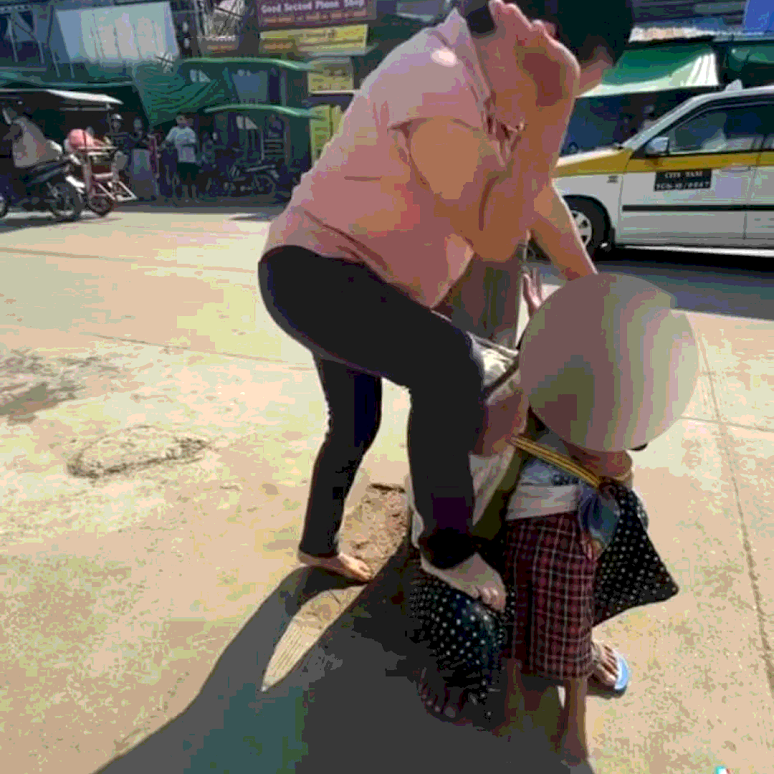Myanmar Spring Chronicle – October 21 Perspective
(MoeMaKa, October 22, 2025)
The Impact of the Social Media Era
A few days ago, a video went viral on social media showing an incident in Yangon’s Hlaing Tharyar Township. In the video, a woman who had brought along a 4- or 5-year-old child was accused of stealing from a convenience shop. The shop owner then allegedly tied the woman — and the child — to an electric pole with a rope, scolding and threatening her.
The video shows the woman tied up, the child crying beside her, and the shop owner threatening to pour hot water on her. It spread rapidly across Myanmar’s social media, becoming one of the most viewed, commented-on, and shared posts of the day.
The next day, reports said both the accused woman and the female shop owner were taken to the police station. Meanwhile, several well-known social media figures and volunteers began mobilizing to help the tied-up woman and her child, offering assistance and calling for justice.
Public opinion split sharply.
Most people condemned the act of tying and threatening the woman and child, saying that—even if the theft accusation were true—such humiliation and abuse were unacceptable, especially toward a child. Others, however, expressed sympathy for the shop owner, saying she may have acted out of frustration after repeated shoplifting incidents.
Some commentators brought up the broader social issue — noting that there are organized groups who use children as shields for theft or force them into begging. Others argued that while shopkeepers deserve empathy, no one has the right to use violence or public humiliation, particularly against a child.
Many people connected the incident to the country’s worsening poverty and unemployment. They argued that economic hardship since the coup — coupled with inflation and scarcity — has driven more people into desperate acts like theft or begging. From this perspective, even if the accused woman did steal, the deeper blame lies with a system that has impoverished her.
Others took a broader political view: that the true culprit behind the widespread suffering is the military junta, whose coup devastated the economy and livelihoods. Some criticized the justice system for punishing only small-time offenders—those who steal small amounts to survive—while leaving untouched the powerful elites who exploit the nation’s wealth and workers.
Another viewpoint emphasized the breakdown of law and order. Because people no longer trust the courts or the police, many believe that “mob justice” — punishing a suspect on the spot — is justified. In this case, some even said the shop owner’s actions were “understandable,” though extreme.
At the same time, those who sympathized with the woman and her child were themselves attacked online, accused of “siding with thieves.” This polarization of opinion reflects the divisive nature of social media: a space filled with competing emotions, moral judgments, and outrage.
Yet, across all these debates, no one defended the act of abusing or frightening the child. Many called for accountability against the networks that exploit children — whether for theft, street begging, or other criminal purposes.
Looking deeper, two fundamental causes stand out: poverty and the absence of rule of law.
As long as poverty remains unaddressed, theft and begging will only spread.
And without real justice, such crimes will increasingly be carried out by organized groups, who may even coerce or exploit children.
The incident also illustrates one of the darker consequences of the social media age. Every time a sensational case like this appears online, it quickly becomes a public spectacle. This phenomenon is similar to what English-speaking media critics call “poverty porn” — content that displays the suffering of poor people to attract attention or self-promotion.
In Myanmar, people jokingly call this trend “the poor man’s drama.” Whenever such incidents appear, waves of donations and aid offers flood in — cash, shelter, medicine, or education for the person featured. While some of this help is genuine, much of it turns into a performance: an opportunity for donors or influencers to advertise their own names and reputations.
Instead of addressing the root causes — poverty, systemic injustice, lack of opportunity — the focus often narrows to helping one visible victim, posting about it, and basking in the social approval. It becomes a way of polishing one’s ego or public image, rather than solving structural problems.
In that sense, this behavior mirrors the marketing logic of capitalism itself — where even compassion becomes a brand. In the commercial world, there have been cases where companies pay condemned prisoners to appear in advertisements — a striking example of how profit and publicity override ethics.
The same pattern applies here: prioritizing short-term visibility and self-satisfaction over meaningful, long-term solutions.
The Hlaing Tharyar incident has thus become a reflection of three interlocking crises:
-
the collapse of rule of law,
-
the deepening of poverty, and
-
the exploitative side of social media culture,
where individuals and organizations polish their own image amid others’ suffering — a mirror held up to the moral decay of a society under strain.

